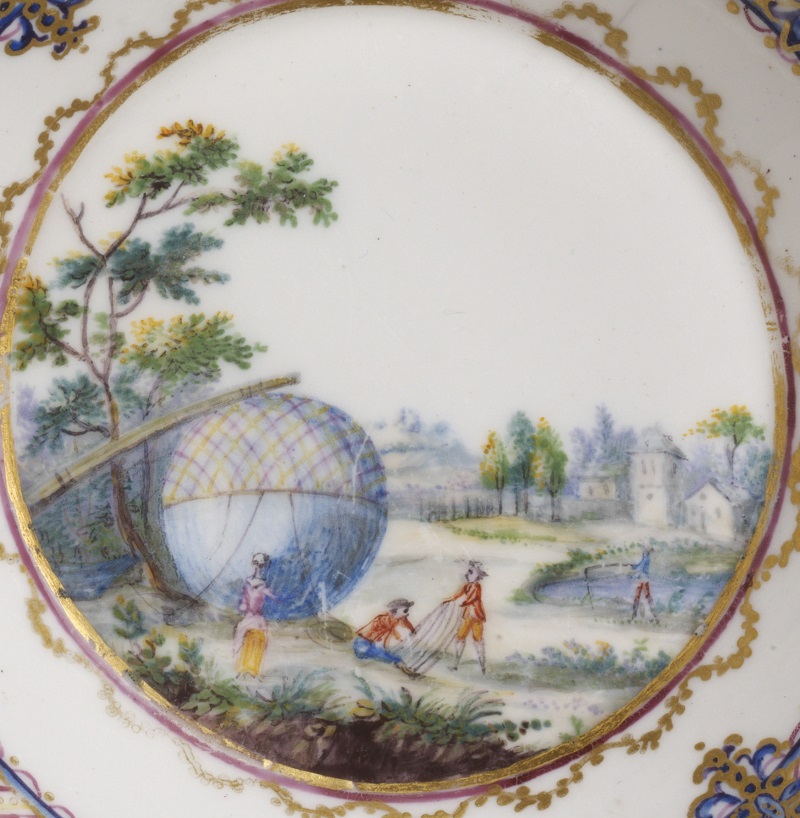By Object Pitch Day 5, we were over half way through the process and edging ever closer to our impossible decision.
Our call for V&A staff to make their case for one object above the many had, again, resulted in a packed programme of great objects and even better ideas. (Reflecting the high number of participants at this particular session, this is the first of two reports to be posted on the A history of an OBJECT in 100 worlds blog.) As before, the first half of Object Pitch Day 5 saw competitors from across the V&A employ a wide range of approaches to their objects, teasing out some very big ideas indeed. In just over 20 minutes, pitchers touched on key concepts including modernity, luxury, branding and Thorstein Veblen’s theory of conspicuous consumption (we’d been waiting for that one to pop up…). We also had our second repeat object, in the form of Dale Chihuly’s striking Rotunda Chandelier, and our first rebel pitcher made a case for an object that isn’t actually in the V&A’s collection. It was a great pitch, though, so we let this flagrant rule-breaker have his five minutes.
Once again, it was over to Bill Sherman and his stopwatch…
OP5/01
James Wilson, Training and Development Consultant in Human Resources, began his pitch for Chihuly’s Rotunda Chandelier by citing three worlds instead of an object, “the world of music, the world of medicine and the world of dance”, all linked by his deft exploration of what we mean when we describe something as ‘breath-taking’.
James explained how the idea at the heart of his intricate pitch initially came from a conversation with his father about becoming friends with the musician Oren Marshall.

He told his father that Marshall is “probably the finest tuba player in the UK and…a phenomenal teacher” who teaches “not by teaching people how to blow” but “by taking their breath away” and making his students “exercise and exercise and exercise until they are so out of breath that they start to breathe really deeply and fundamentally”.
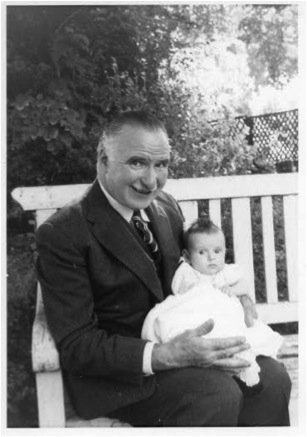
His father’s somewhat surprising response was to highlight the overlaps with James’s grandfather’s job as an Ear, Nose and Throat surgeon, notably as the doctor who looked after Winston Churchill’s throat during the Second World War.
In common with Marshall, James’s grandfather deliberately made his patients out of breath. James outlined one of his more unorthodox techniques: “What he used to do when someone came to him with a blocked-up nose was to give them a cigarette card and say hold it between your teeth, between your lips, and then run up and down until you’re out of breath”.
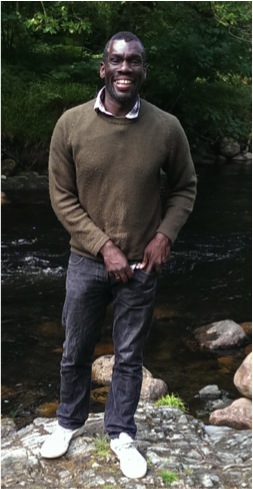
Having established two very “different takes on breath – about taking your breath away”, James concluded his trio of worlds with the example of his friend Chris, who had been a successful dancer, working with Slyvie Guillem and Wayne Sleep, but had to stop “because of breathing”. As James elaborated, Chris “has a lung complaint which means he can only take in half of what we would normally take in, so every time he was on stage all he wanted to do was to get off stage because for him dancing was breath-taking”.
Struck by these very different perspectives on being out of breath, when the A History of an OBJECT in 100 Worlds project was announced , James found himself asking, “What object in the V&A is breath-taking?”
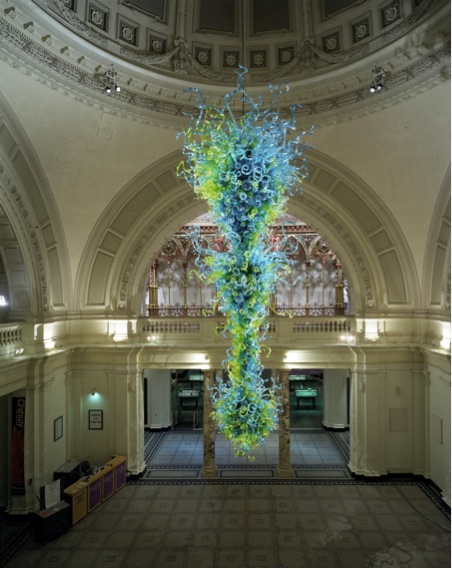
His answer was an object that has already been described as ‘breath-taking’ by the London Evening Standard, measures some 30 feet, comprises “1300 objects” or individual pieces, takes “seven weeks to clean” and is “hung by two cables so it’s possibly one of the heaviest things” in the V&A.
Illustrating his point with an unusual image of the object disassembled into its many glass components, James deftly linked his ‘breath-taking’ object back to the idea of breathing. “We can take this phrase ‘breath-taking’ when people come and say, ‘Wow! That takes my breath away!’ But it was created – it was hand-blown – mould-blown or free-blown – by Dale Chihuly’s studio”. As James argued, this means “…it took more breath to create it than possibly any other piece in the museum”.
In holding the breath of the people who made it and taking away the breath of visitors, James sees the Chihuly Rotunda Chandelier as encapsulating “worlds – this thing which is absolutely fundamental to our lives, to how a musician works, a dancer works, to how an Ear, Nose and Throat specialist tries to help these people”.
In choosing an object that is so synonymous with the V&A, he mused on how much we, as members of staff, actually “notice it when we walk around in the museum?” Do we always find it breath-taking?
As James’s intricate pitch ultimately suggested, “…if you’re looking for an object which has the potential to stimulate more thinking about other worlds, I would offer you Chihuly’s chandelier”.
OP5/02
Kathryn Johnson, Researcher for the V&A’s director Martin Roth, started her pitch by meditating on the problem at hand, “Clearly there’s no one object that can be talked about in 100 worlds, but many. I was thinking if this one object is going to grip people so that they want to hear 100 stories about it, what does it need?”
Her answer was to choose something that appealed to our “interest in ourselves and each other” – something with a clearly defined “human element – some kind of figurehead”.
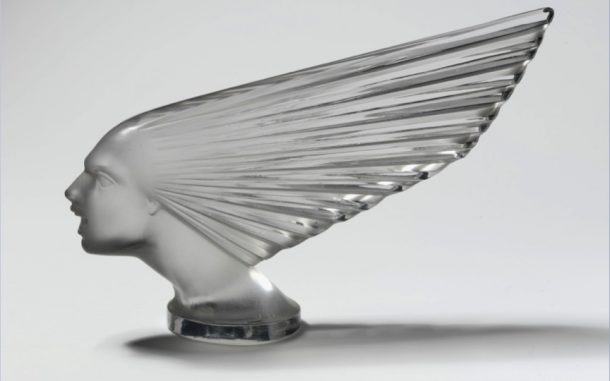
Introducing her object as “Victoire”, “quite androgynous”, French and a “well-preserved 86 years old”, Kathryn presented something that seemed “at first glance” to be a piece of sculpture but was, in fact, a car radiator mascot designed by René Lalique in 1928.
This particular figurehead first “appeared at the 1928 Paris Motor Show on the bonnet of a Minerva car, which was a luxury brand, a bit like Rolls-Royce”. Kathryn enchanted us with her account of how Victoire “could be made even more special by lights coming from underneath it, so you could have any colour you wanted”, conjuring up how “this coming towards you on a dark road, lit up, would be quite other worldly”.
Significantly, unlike other famous mascots, like Rolls-Royce’s ‘Spirit of Ecstasy’ or Bugatti’s elephant, Victoire was not tied to a specific brand, even though it appeared on a Minerva car to begin with. Kathryn illustrated the desirability of her object for contemporaries by explaining how car owners “would sometimes unscrew the actual car brand mascot and replace it with this because this was more expensive, more luxurious, more individual”.
As Kathryn reminded us, this example of early 20th-century brand disloyalty is hugely topical in the V&A at the moment, “particularly around this spring’s ‘What is Luxury ?’ exhibition because it’s about changing attitudes to brands”. While it was appropriate to replace the Rolls-Royce mascot in the 1920s, doing so now would be inconceivable: “…it’s like taking the Channel logo off a handbag. Why would you do that? That’s the reason you bought it”. Interrogating this shift, she proposed that, perhaps, “…people now have more reverential attitudes to brands or the identification with the brand is prized more than individuality”.
Interrogating the object’s status as a luxury item, she went on to connect this classification to its impracticality. “Even if dealers at the time told owners that it’s totally unbreakable – you’ll have it for years and years – I mean it’s glass on a car vibrating along roads!” The circumstances of the mascot’s use have translated into desirability – “…it’s prized by collectors because there are relatively few – so many broke” – which Kathryn deftly teased into a broader “connection between luxury and transience – ephemerality – impracticality” that she proposed could be pushed further by the project.
Kathryn also suggested that her object “goes to the heart of some debates that are longstanding in the V&A – but also 20th-century design – the relationship of craft to industry, and mass production to the individual object”.
Citing design historian and critic Stephen Bayley , curator of an exhibition about Ford at the V&A in the 1980s, Kathryn went on to elaborate the challenges posed by cars from the perspective of museum classification. She shared how Bayley had told her “…that cars were a problem in the V&A because they couldn’t decide whether they were sculpture or metalwork”. As she concluded, they were “clearly both: sculptural metalwork”.
Within the same framework, the “…mascot sets up a similar conundrum. It’s a piece of craft – it’s about glass-making traditions – it’s about craftsmanship – it’s about sculpture – but it’s also about industrial design”. Although not produced on a massive scale, the mascot was “certainly still mass produced” – and, as Kathryn told us, in Lalique’s catalogue it sat beside other types of product design including “…perfume bottles and glasses and paperweights and all the other things he produced”.
An object of its time, the mascot is also “a real icon of Art Deco style”, combining “Classical sculptural elements with this angular hair” evoking “speed and the machine age”. Speaking absolutely of the time it was made, it remains “an intriguing and powerful image now”.
As a designed entity – one feature in the “overall design of the car” – Kathryn compared the mascot to the “fascinator in an outfit – it’s a bit of fantasy and imagination”; quoting a commentator on the matter, she summed up this appeal:, “Mascots embody every possible human aspiration, superstition, hope fear expectation pretension and obsession, as well as fantasy and humour”.
Stepping back from her specific object, Kathryn then unpacked the meaning of car mascots as an object type: as something that is “totemic” and has great “emotional power”.
The latter she explained by reference to the first identified car mascot: “…a St Christopher that Lord Montegu of Beaulieu – of the Beaulieu Motor Car exhibition – put on his car and caused a scandal by driving to the House of Commons in the late 1890s”. The St Christopher medal was supposed to bring good luck to those who wore it but, as Kathryn suggested, even a secular mascot like this “has a totemic, emotional power”.
Unravelling the symbolic meanings that could be attached to ‘Victoire’, she revealed that although this mascot was sometimes described as ‘the sprit of the wind’ in Britain, it had very different associations in America. There, “because it looks a bit like a Native American”, it was “sometimes called Seminole” after the “only tribe who never signed a peace treaty and were, thus, considered aggressive and challenging”.
Finishing with a flourish, she quoted writer Tom Wolfe, “…who I think has written brilliantly about cars”, calling them “Art with a capital ‘A’”. He said: “My definition of art is anything that you can take out of its natural environment and regard as something that’s beautiful and significant unto itself.”
Quoting Wolfe, again, she summed up the huge appeal of cars – and, by inference, her object: “cars are freedom, style, sex, power, motion, color – everything is right there.”
OP5/03
Next was a thought-provoking pitch by Rory Hyde, Curator of Contemporary Architecture and Urbanism, for a late 18th-century saucer made by the Sèvres porcelain factory. From a single scene in 18th-century France, he speculated on how new ways of looking helped “spark” modernity.
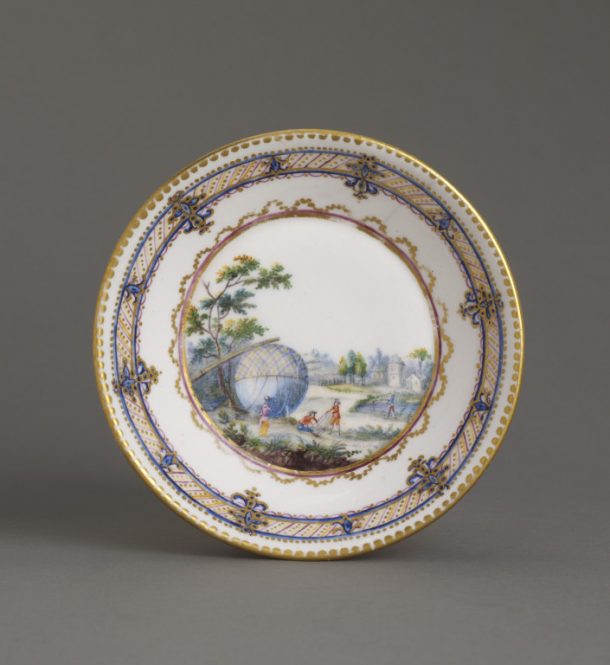
Rory started by taking us back to 2 March 1784, when “the pioneering aeronaut, Jean-Pierre Blanchard – in only the third ever manned flight” launched his hot-air balloon from the Champ de Mars in Paris, intending to fly to La Villette, then beyond the walls to the north-east of the city. Instead, he crashed in Sèvres; a sight that it is thought the saucer’s painter, André-Vincent Vielliard, actually witnessed.
![André-Vincent Vielliard, Sèvres Porcelain Factory, soft-paste porcelain saucer [detail], painted in enamels and gilt, 1784, France. Museum no. C.114-1972 © Victoria and Albert Museum, London](https://www.vam.ac.uk/blog/wp-content/uploads/2015/02/Rory-Hyde-2_f3bb2192c73322384e5b243016af02fd-610x624.jpg)
This “simple image” was “blissfully ignorant of the radical transformation this technology would have on the world”.
Rory’s account of his object took in its formal qualities – as something “remarkable for its resolution: 220 years old, and still bright, crisp and sharp” – as well as the groundbreaking nature of its content. Notably, the saucer was “paired with a cup”, showing the balloon in flight. “Together they form a kind of proto-animation, a sequence of images that tells a story. One you lift, the flight, and one that stays on the table, the crash”.
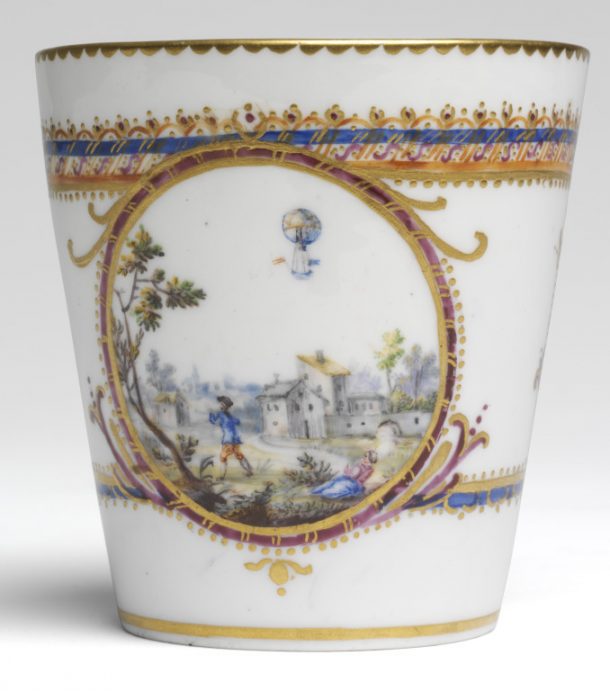
Impressing the incongruity of the balloon in its 18th-century context, Rory described “…a heavy world, of horses, carts and stone, into which this ethereal flying orb has been inserted. Like Jake or Dinos Chapman have gone and painted it in later, like a red nose on a Goya”. In interrupting the pastoral scene, the balloon crash “…feels like a lark – the word ‘experiment’ would be too formal”, as if the future was being invented by accident.
Moving outwards from the saucer, Rory explained how contemporaries perceived the hot-air balloon as a mode of transport, sharing some of the surprising applications suggested at the time. He made us laugh with the hair-brained scheme proposed by the inventor, diplomat and politician, Benjamin Franklin , who suggested a form of “balloon refrigeration where “everybody would have a balloon tethered to their house that would elevate their food to chill it”.
Rory also illustrated the serious applications of hot-air balloons that would lead to “astonishing breakthroughs in all aspects of life”. These included atmospheric science, use as part of military espionage and, most notably, mapping. In the latter capacity, the “new perspective” afforded by the balloon “would lead to a new concept of the city: from the invention of tourist maps, to new forms of urban planning”.
Looking down at London from above certainly gave the 19th-century writer and social reformer Henry Mayhew a different perspective on the city: “To look down upon the whole of London as the birds of the air look down upon it, and see it dwindled into a mere rubbish heap.” Rory told us that after this trip, Mayhew was inspired to write his seminal ‘London Labour and the London Poor’. “Published in 1851, this book offered a counterpoint to the triumphalism and imperialism of the Great Exhibition, and therefore the V&A”.
Rory finished his pitch by following the trajectory of the hot-air balloon to the present day, taking in developments in communication, with balloons being “used to keep the post running during the Siege of Paris (1870 –71), with multiple posts still delivered at various times during the day, a prototype for airmail”, and architecture, as in “Archigram’s instant cities of the 1960s, driven by events and spontaneity, brought into being by balloons”.
The hot-air balloon could even be seen to contribute to “our planetary self-hood” and growing awareness of environmental issues. Rory framed it as “a tool of reflection”, “a tool of distance” that “sparked our environmental consciousness”. He also referred to Stewart Brand , creator and editor of the pioneering countercultural publication, The Whole Earth Catalog , who released a series of badges in the 1960s asking, ‘Why haven’t we seen a photo of the whole earth yet?’.
Most celebrated, however, was NASA’s iconic image ‘The Blue Marble’ , which contributed to “the creation of Friends of the Earth, Greenpeace and dozens of other environmental organisations”. As Rory reiterated, “Simply by seeing we become more self-aware”.
He concluded with “another image of a balloon in a field” in 2014 – 220 years after the bucolic scene we started with. This contemporary photograph, showing “a launch, rather than a crash”, brought the hot-air balloon right up to date with Google’s ‘Project Loon’ : “a plan to bring free wireless Internet to the whole of Africa, via hundreds of autonomous networked balloons floating in the lower atmosphere”.
Negotiating the space between these two images – one from 2014, the other from 1784 – Rory reflected on the broader implications of the differences: “Something has happened between these two images. It marks a shift from cutting through space, to containing it. From aerofoil to envelope. From vector to atmosphere. The 20th century belonged to the bird. The 21st century will belong to the cloud”.
OP5/04
Guy Julier, University of Brighton / V&A Research Fellow in Contemporary Design, began by pulling apart the challenge we’d been set. After all, he mused, “No object is an island, and yet we are being asked to nominate just one object, while all objects are contingent upon others”.
Illustrating the lunacy of ‘objects as islands’, he took the example of buying a toaster and showed how this is best thought of as buying “into a toaster project”. One that comprises a network of objects, infrastructures and associated behaviours:
electrical points
electricity
sliced-bread
butter
jam
small plates
crumbs
breakfast
buttering skill
toasting skill
knowledge of the toaster settings
bodily activities
states of emotion (“Aaaah, the smell of toast in the morning…”)
instructions to be read…
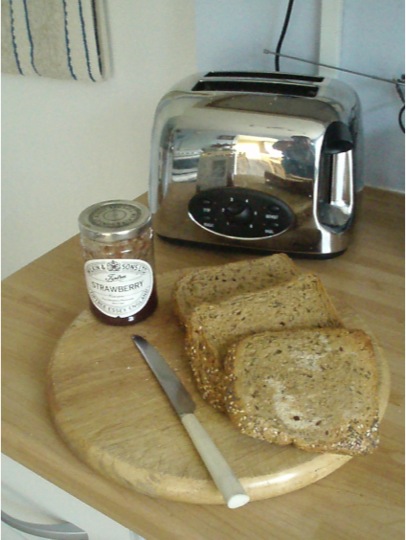
With this in mind, he argued, “if we are to select just one object, then this should be interstitial, contingent, liminal – pointing toward other objects, to a broader assemblage of everyday practices and understandings, that in turn take us elsewhere”.
Having set his conceptual framework, Guy revealed his rather surprising choice of object: “the instructions that comes with the Alessi lemon squeezer”.
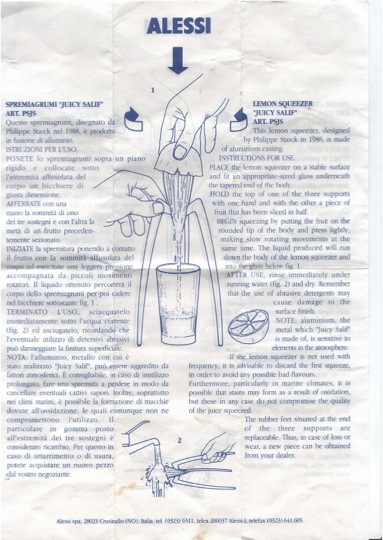
(As it turned out, neither the Alessi ‘Juicy Salif’ squeezer not its instructions are in the V&A’s collection but we were already hooked by Guy’s pitch so gave him the benefit of the doubt.)
The instructions say:
‘NOTE: aluminium, the metal which “Juicy Salif” is made of, is sensitive to elements in the atmosphere. If the lemon squeezer is not used with frequency, it is advisable to discard the first squeeze, in order to avoid any possible bad flavours.’
Using these instructions, Guy attended to an object where form doesn’t just overrule function, but where the unwieldiness of form is function, socially, culturally and economically.
To underline this, he quoted the object’s designer, Philippe Starck, who said, “It is not a very good lemon-squeezer”, deadpanning, “Indeed, it isn’t”.
What, then, are the functions of an object that isn’t very good at the thing it was designed to do? Guy tackled this question by describing the lemon squeezer as “a very good example of what Thorstein Veblen called ‘conspicuous waste’”, emulating “utility for the middle-class, just as hunting, shooting and fishing did for the aristocracy”. As a deliberate play at squeezing lemons, “…it doesn’t matter if the first squeeze isn’t useful to your cocktail. You won’t go thirsty, just as playing at hunting or fishing doesn’t mean that Lord and Lady Smith-Smythson-Smith will go hungry”.
This means, “…conspicuous leisure is bound up with conspicuous waste”. As Guy argued, “We chuck things away, underuse things, store things and display things because we can. We have the time and money to do this. It is what much of the world’s population aspire to do: to move beyond spending every waking hour in grinding labour”.
The instructions can also be reframed as ritual – ‘PLACE…HOLD…BEGIN’ – an injunction to “…discipline your body, your muscle memory, your disposition according to these rules of conspicuous leisure, just as our foremothers and fathers were disciplined to conspicuous labour and conspicuous religion”.
Extending Starck’s quotation, Guy showed how the lemon squeezer also participates in “one of the anthropological mainstays: gift culture”. As the designer said:
“This is not a very good lemon squeezer: but that’s not its only function. I had this idea that when a couple get married it’s the sort of thing they would get as a wedding present. So the new husband’s parents come round, he and his father sit in the living room with a beer, watching television, and the new bride and mother-in-law sit in the kitchen to get to know each other better. ‘Look what we got as a present’, the daughter-in-law will say”.
Here, then, we have “one of the most talked about designs of the neoliberal age talked about, by its designer, by its imagined consumer, and even its producer”.
For Guy, the instructions “break the aura” of the ‘design classic’, telling us “it’s not a very good lemon squeezer”, and, in effect, taking “Walter Benjamin’s notion of the work of art” and turning it on its head. In fact, “…the closer you get to the original – by reading the instructions – the more we find that the shine of the object can rub off”.
Developing this notion – the consumer’s dawning realisation of an object’s failed functionality – Guy made us laugh with his suggestion that had “the Mona Lisa come with instructions, then Walter Benjamin might have thought differently about The Work of Art in the Age of Mechanical Reproduction”.
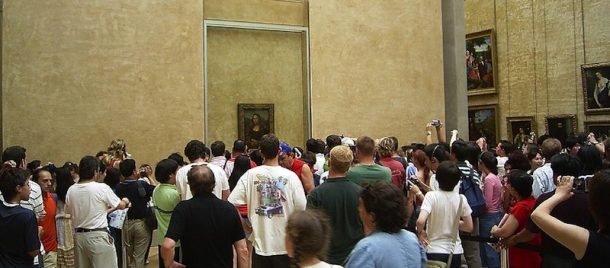
By the same token, had Alessi failed to provide instructions for the lemon squeezer, would we “… have expected to have put this token to actual use”? Instead, it might “…have stayed on the kitchen shelf, curated and displayed along with all those other knick-knacks that mark weddings, christenings, holidays and personal achievements”.
Concluding his conceptually invigorating journey around Alessi’s ‘Juicy Salif’, Guy reprised his opening idea: that “no object is an island”. This time it was placed in opposition to museum display practices, where institutions like the V&A “stubbornly display individual, finished objects for visual appreciation”.
By contrast, the inclusion of “instructions or packaging – what the sociologist of technology Madeline Akrich calls their ‘scripting’” – means that “things begin to the reveal themselves in other ways”.
“At least with these instructions we have ways into how we touch, think about and valorise the things they attach to. Extending from sociologist Karin Knorr-Cetina’s observations, if we view the object as part of a complex network of things and people that is dynamic and unstable, then they become forever ‘unfinished objects’, open to continual reinvention, re-use and re-imaginings, free from the dead hand of the museum caption and the gallery case”.
***
Guy is absolutely right of course – no object is an island – and this is exactly what A history of an OBJECT in 100 worlds seeks to illustrate. Rather than treat objects as autonomous, as things set in glorious isolation, the project celebrates the sometimes-surprising links between things, people, ideas, identities and cultures.
The first part of Object Pitch Day 5 certainly gave us a lot to think about. Where, for example, did we stand in the debates about luxury that Kathryn touched on in her pitch? Should we choose something that was rare and exclusive, or that was accessible to wider publics? Was our choice going to be an object that represented significant historical change, as in Rory ’s presentation? Should it be quite literally breath-taking, as in James’s compelling argument for the Chihuly Rotunda Chandelier? Or, as in Guy’s pitch, should our final selection be something that explicitly provides a platform for ‘networking’ worlds to show how objects never stand still, even in the context of the museum?
What would the second half of Object Pitch Day 5 bring?
